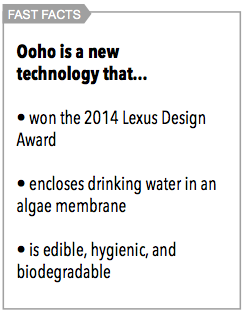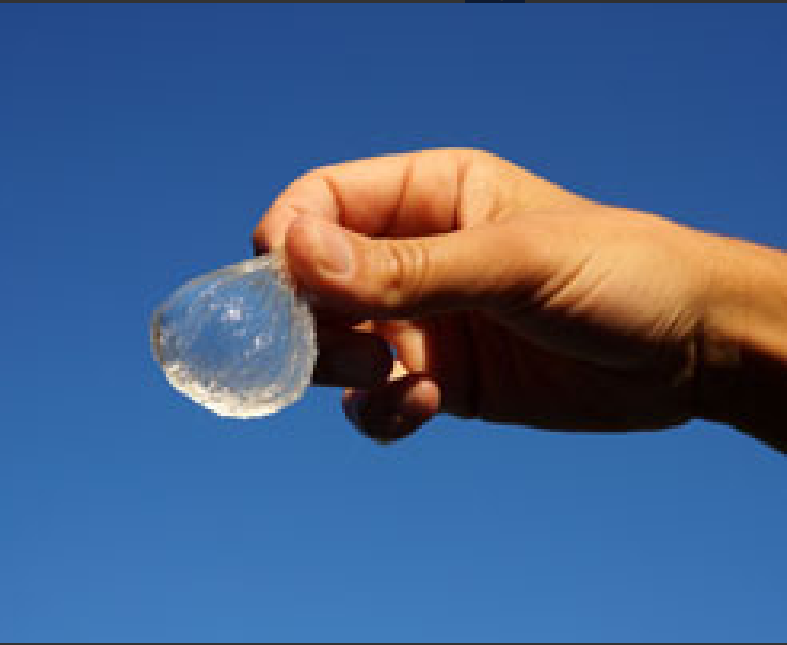Edible water container challenges future plastic use
Students from the Imperial College London (ICL), who invented the first ever edible water container, hope that it can eradicate the use of disposable water bottles all around the world.
Students from the Imperial College London (ICL) recently invented the first ever edible water container. If widely accepted, the team hopes that it can eradicate the use of disposable water bottles all around the world.
Currently, people consume thousands upon thousands of liters of water from plastic water bottles per year. The waste is then deposited in landfills and recycling plants. A small percentage of them plagues the forests, oceans, and wildlife everywhere.
People all over the world aim to eradicate the harm on wildlife, and have come up with countless ideas and inventions to better the planet, but this one has a certain appeal to it that people have really taken a liking to.

“It seems really cool,” sophomore Mehul Khetrapal said . This kind of reaction was received by many people, who thought the idea of an algae ‘water balloon’ was an ingenious idea.
The team used a method called “spherification” to blend molecular gastronomy and culinary arts in order to achieve their desired result of an effective water bottle. This same method is used commonly to encase sauces and other liquids in thin spherical containers.
“The way they did it seems pretty cool and I think the people who did it are very smart,” said Sriram Somasundaram (11).
The ICL team spent years brainstorming and researching, before they came up with a plausible design and were able to implement it.
This invention was intended to be easy to use for regular people as a plausible substitute for regular water bottles, and is thought to have huge promise for the future.
This article was originally published in the pages of The Winged Post on May 16, 2014

Arthi Iyer is a ninth grader at the Upper School. In her free time, she likes to read mystery novels, walk her dogs, and surf the Internet on her laptop....


















![“[Building nerf blasters] became this outlet of creativity for me that hasn't been matched by anything else. The process [of] making a build complete to your desire is such a painstakingly difficult process, but I've had to learn from [the skills needed from] soldering to proper painting. There's so many different options for everything, if you think about it, it exists. The best part is [that] if it doesn't exist, you can build it yourself," Ishaan Parate said.](https://harkeraquila.com/wp-content/uploads/2022/08/DSC_8149-900x604.jpg)




![“When I came into high school, I was ready to be a follower. But DECA was a game changer for me. It helped me overcome my fear of public speaking, and it's played such a major role in who I've become today. To be able to successfully lead a chapter of 150 students, an officer team and be one of the upperclassmen I once really admired is something I'm [really] proud of,” Anvitha Tummala ('21) said.](https://harkeraquila.com/wp-content/uploads/2021/07/Screen-Shot-2021-07-25-at-9.50.05-AM-900x594.png)







![“I think getting up in the morning and having a sense of purpose [is exciting]. I think without a certain amount of drive, life is kind of obsolete and mundane, and I think having that every single day is what makes each day unique and kind of makes life exciting,” Neymika Jain (12) said.](https://harkeraquila.com/wp-content/uploads/2017/06/Screen-Shot-2017-06-03-at-4.54.16-PM.png)








![“My slogan is ‘slow feet, don’t eat, and I’m hungry.’ You need to run fast to get where you are–you aren't going to get those championships if you aren't fast,” Angel Cervantes (12) said. “I want to do well in school on my tests and in track and win championships for my team. I live by that, [and] I can do that anywhere: in the classroom or on the field.”](https://harkeraquila.com/wp-content/uploads/2018/06/DSC5146-900x601.jpg)
![“[Volleyball has] taught me how to fall correctly, and another thing it taught is that you don’t have to be the best at something to be good at it. If you just hit the ball in a smart way, then it still scores points and you’re good at it. You could be a background player and still make a much bigger impact on the team than you would think,” Anya Gert (’20) said.](https://harkeraquila.com/wp-content/uploads/2020/06/AnnaGert_JinTuan_HoHPhotoEdited-600x900.jpeg)

![“I'm not nearly there yet, but [my confidence has] definitely been getting better since I was pretty shy and timid coming into Harker my freshman year. I know that there's a lot of people that are really confident in what they do, and I really admire them. Everyone's so driven and that has really pushed me to kind of try to find my own place in high school and be more confident,” Alyssa Huang (’20) said.](https://harkeraquila.com/wp-content/uploads/2020/06/AlyssaHuang_EmilyChen_HoHPhoto-900x749.jpeg)



